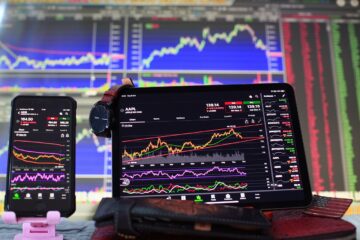Introduction
Forex trading, or foreign exchange trading, is one of the largest and most liquid financial markets in the world. It involves the buying and selling of currencies, with traders aiming to profit from fluctuations in exchange rates. With a daily trading volume exceeding $7 trillion, the Forex market operates 24 hours a day, five days a week, connecting traders from all corners of the globe.
How Forex Trading Works
Forex trading takes place in a decentralized marketplace, meaning there is no central exchange. Instead, trading occurs electronically over-the-counter (OTC) through a network of banks, brokers, and financial institutions. The market is divided into three main trading sessions:
- Asian Session (Tokyo) – Starts the trading day with moderate volatility.
- European Session (London) – The most active and liquid session.
- American Session (New York) – High volatility, often overlapping with the London session.
Currencies are traded in pairs, such as EUR/USD, GBP/JPY, or USD/CHF. The first currency in the pair is the base currency, and the second is the quote currency. Traders speculate whether the base currency will appreciate or depreciate against the quote currency.
Key Players in the Forex Market
Several participants contribute to the liquidity and movement of the Forex market, including:
- Central Banks – Influence currency value through monetary policies and interest rates.
- Commercial Banks & Financial Institutions – Facilitate large transactions for corporations and governments.
- Retail Traders – Individual investors speculating on currency price movements.
- Hedge Funds & Investment Firms – Engage in large-scale currency trading for portfolio diversification.
Trading Strategies in Forex
Forex traders use various strategies to maximize profits and minimize risks, including:
- Scalping – Making multiple small trades throughout the day to capitalize on minor price movements.
- Day Trading – Opening and closing positions within the same trading day to avoid overnight risks.
- Swing Trading – Holding positions for several days to capitalize on medium-term trends.
- Position Trading – A long-term approach based on fundamental analysis and macroeconomic trends.
Risk Management in Forex Trading
Forex trading carries inherent risks due to market volatility, leverage, and geopolitical events. Successful traders implement risk management strategies such as:
✅ Stop-Loss Orders – Automatically closing a trade when a certain price level is reached to limit losses.
✅ Risk-to-Reward Ratio – Ensuring potential profits outweigh potential losses.
✅ Diversification – Spreading investments across multiple currency pairs.
Conclusion
Forex trading presents significant opportunities for profit, but it also requires knowledge, discipline, and risk management. Whether you are a beginner or an experienced trader, understanding market dynamics, economic indicators, and trading strategies is essential for long-term success. With the right approach, Forex trading can be a lucrative endeavor in the ever-evolving world of global finance.


